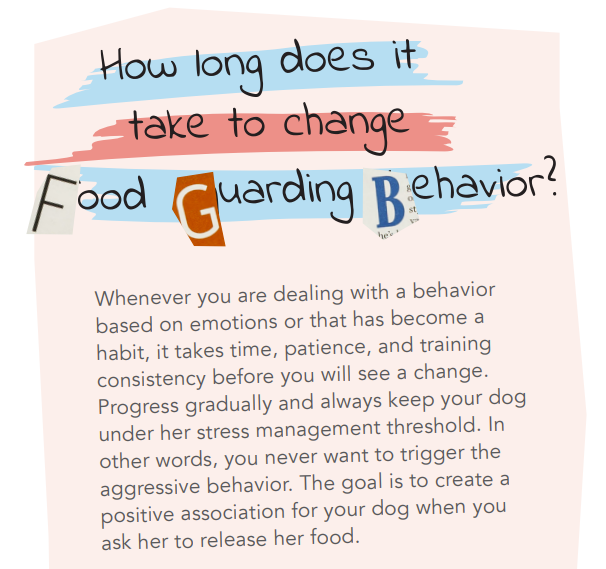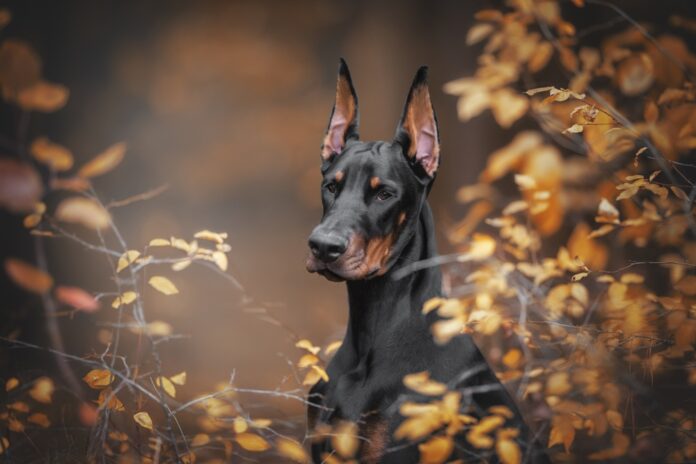Food aggression in dogs — and what to do about it

Does your dog growl or snap when you reach for his food bowl? While it stems from a normal canine behavior called resource guarding, food aggression is an issue that needs attention.
Just like us, dogs want to protect their possessions, including toys, favorite resting spots, their families – and their food. Indeed, resource guarding is normal canine behavior. It can range from your dog simply showing some resistance when giving up an item, to growling, snapping, or even biting when you reach for his food bowl or get too close to him while he’s eating. If your dog fits the latter category, he’s showing food aggression. Read on to learn more about food aggression in dogs, and the steps you can take to modify it.
What to do about food aggression
1. Manage the behavior
Some people accept food guarding as a natural behavior and chose to manage rather than change it. This might be an option if your dog’s guarding is mild and predictable. For example, if he only guards his food bowl, you could simply maintain a safe distance while he is eating. However, this is not a feasible option if children or others who are not able to follow strict management procedures live in the household.
A lot of people don’t want to have to worry about moving carefully around their dogs’ food bowls. Luckily, in many cases, the aggressive behavior can be modified by following the steps below. If your dog reacts with strong aggression around food, however, and/or you feel uncomfortable training him or have difficulty reading his body language, seek help from a professional dog trainer or canine behaviorist who will use positive reinforcement methods to modify the behavior.
2. Change the way your dog feels about giving up a food item
The goal is to teach your dog that you are not a threat when you approach him while he is eating, but quite the opposite. You want him to learn that when you come near, he will get even better things.
Stage 1
Familiarize yourself with the guarding behaviors your dog displays around his food. Does he start eating faster, or does he become stiff, hover over the food, give you a hard stare, show his teeth, growl or snap? Determine how closely you can approach before he shows those signs. Does he guard or show aggression when you are right next to him or when you are 10’ away?
Stage 2
Set up a situation in which your dog will exhibit guarding behavior; for example, give him a stuffed Kong. Start with a low-value food before trying this with something highly desirable like a meaty bone.
- From a distance at which your dog does not display any guarding signs, toss a high-value treat close to his mouth, then step back. Make sure your dog likes the treats better than what he is eating at the time. It is very important that you remain at a distance where your dog feels comfortable with your presence. You do not want to trigger the aggressive behavior.
- Only when your dog remains relaxed as you approach, and eventually looks to you in anticipation of a treat, should you decrease the distance from which you toss the treats.
- After a few repetitions, increase the distance to take some pressure off before you decrease it again.
- Gradually proceed in this manner until you can stand right beside your dog. Signs that he’s responding well are a loose body, an absence of frantic chewing, and a happy anticipation of your approach. This can only be achieved by many repetitions over a period of days, weeks, or even months, depending on the severity of the guarding behavior.
- If you are afraid your dog might charge at you, tether him before presenting him with the food. Ideally, though, throughout this behavior modification protocol, you will proceed so slowly and carefully that you never trigger an aggressive response. If the situation seems unsafe at any time, stop and seek help from a professional trainer or behaviorist.
Stage 3
Now you need to teach your dog to remain relaxed when you reach for an object, such as the stuffed Kong mentioned above. This is different from walking towards your dog, so you will have to get him used to this as well.
- Once you are able to walk up to and stand right beside your dog while he remains relaxed and acts happy to see you, start tossing treats when you are just a few steps away from him. Bend toward the Kong, but not over your dog, drop a treat and straighten up again.
- As before, progress slowly. You may only be able to bend over a few inches at first before your dog starts guarding. It is better to progress in baby steps than to trigger the aggressive behavior.
- When you reach the point that your dog remains relaxed while you bend over, gradually move your arm and hand closer to the Kong, always rewarding with treats, until you can eventually take it away.
- Don’t rush; practice a little bit every day. If at any point your dog shows even the mildest guarding behavior, go back to the point at which he was relaxed and gradually progress from there.
- When you are finally able to take the Kong away, reward him with plenty of yummy treats and then return the Kong. The goal is for your dog to learn that sharing will get him even better things, and that he will get his treasure back.
Stage 4
Once your dog no longer guards his food or other valuables, you want to maintain the good behavior. At first, practice a couple of times a week by taking food and other items away, always trading for treats and then returning the item, if appropriate. Then continue to practice a couple of times a month.
3. Teach substitute behaviors
Teach your dog what you would like him to do instead of guarding his food.
“Drop it”
Rather than just grabbing things from him, teach him to “drop it.” Start with something of low value to your dog (e.g. a toy rather than a meaty bone) and use treats of higher value. While he is holding the object, say “drop it” and hold a treat next to his mouth. When he opens his mouth, dropping the object to take the treat, praise him, give him the treat and then return the object to him. Your dog will learn that sharing things with you is well worth it.
 “Leave it”
“Leave it”
Another substitute behavior to teach your dog is “leave it.” You will be able to ask him to leave things before he grabs them, thus preventing him from guarding. With lots of practice and positive reinforcement, this behavior can be strengthened to the level where your dog will step away from a full food bowl when you ask him to “leave it.”
How to prevent resource guarding
Even dogs that don’t fiercely guard their food, toys, or other valued items might be a bit nervous about losing them. Repeatedly taking things away from a dog can turn her into a resource guarder. If she willingly lets you take things away from her, make sure you reward her.
To maintain or increase your dog’s comfort with people being near her food, place a high-value treat into her bowl every now and then while she is eating. She will learn that good things happen when you approach her bowl.
What about puppies?
Even young puppies can be resource guarders. If your new puppy shows guarding signs, follow the protocol described in the article. If she does not guard her food, spend some weeks hand-feeding her, holding your hand inside her food bowl while praising and gently touching her. You are teaching her that a hand near her food bowl is a good thing. Also practice taking the food bowl away. Start with an empty bowl. Place a high-value treat in the bowl, take it away, then return it fairly quickly to avoid teasing her.
It’s also a good idea to teach puppies how to “drop it” and “leave it”, as described in the article.
Left unaddressed, strong resource guarding and food aggression can result in injury to yourself and others in your household. By recognizing the signs and following these suggestions to modify the behavior, you’ll no longer feel the need to avoid your dog when he’s eating!



